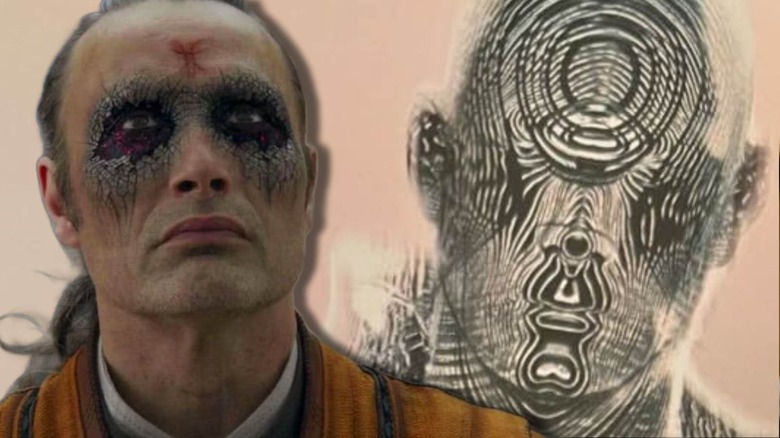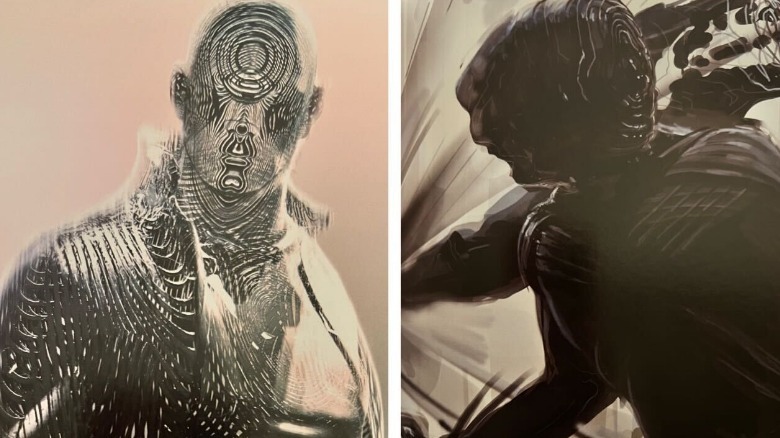Doctor Strange's Villainous Zealots Almost Had A Mind-Bending Astral Form
We may receive a commission on purchases made from links.
The MCU always came with impressive visuals, but then director Scott Derrickson joined the fray, bringing with him a healthy dose of bonkers imagery via the magical debut of "Doctor Strange." Benedict Cumberbatch's introduction into the Marvel Cinematic Universe remains one of the best in the franchise, thanks to its daring efforts at making reality break and time stand still. However, even with all of the spectacular optical effects we saw on screen, there was still plenty more that we didn't see, particularly in the case of the film's villains.
In Stephen Strange's first venture into the mystic arts, he was forced to go up against (the slightly disappointing) Kaecilius (Mads Mikkelsen) and his small band of acolytes. Already a force to be feared, it was revealed in the book, "The Infinity Saga: The Art of Doctor Strange," that these zealots would have a visible physical trait, due to their devotion to the Dark Dimension. According to artist Jerad Marantz, "There was an idea that the zealots were caught between dimensions, so I was trying to design how they were fractured between two spaces."
The visuals would be similar to how Strange is able to project himself in an astral form while his body lies dormant. "The negative space represents parts of them that were elsewhere-say the Dark Dimension-while everything that's tangible is currently in front of us. They're in two places at once, sliced in sections, like a series of bonds." It's this look that, while not present in Kaecilius' cronies in the film, fluttered and flowed into Strange's first big adversary, Dormammu (also played by Cumberbatch).
The Doctor Strange zealots didn't know if they were coming or going
Another plan for these magic-wielding villains was much more elaborate than the mosaic-like appearance around their eyes that we ended up with. Derrickson's earlier ideas looked as if they'd been put through a paper shredder and thrown across realities, never quite able to return to their human form.
"One idea was maybe they don't necessarily hold a three-dimensional form," explained the director, who knows his way around arresting images after being behind the likes of "Sinister" and "The Black Phone." Here, though, he was on the verge of creating a different kind of horror. "This led us to places in movement where their faces could band or twist, or there would be a visual paradox that looked like a face-but when you see it from a different angle, it would turn into something radically different."
After much deliberation, though, Derrickson confessed that calling it a day on fancy-looking foes and instead giving all the attention to the film's big bad was the right move. "We were already dealing with such complex realities and dimensions that to give those characters different astral bodies in an alternate dimension was probably going to be confusing, so we decided to keep whatever their normal look was in the real world," said Derrickson. "Much like Strange, the physical and astral form would be the same."
It's a shame that Marantz's wild ideas never materialized for Kaecilius' crew, but they persisted with their terrifying god, making for one of the film's most visually striking moments. A fair bargain, indeed.


